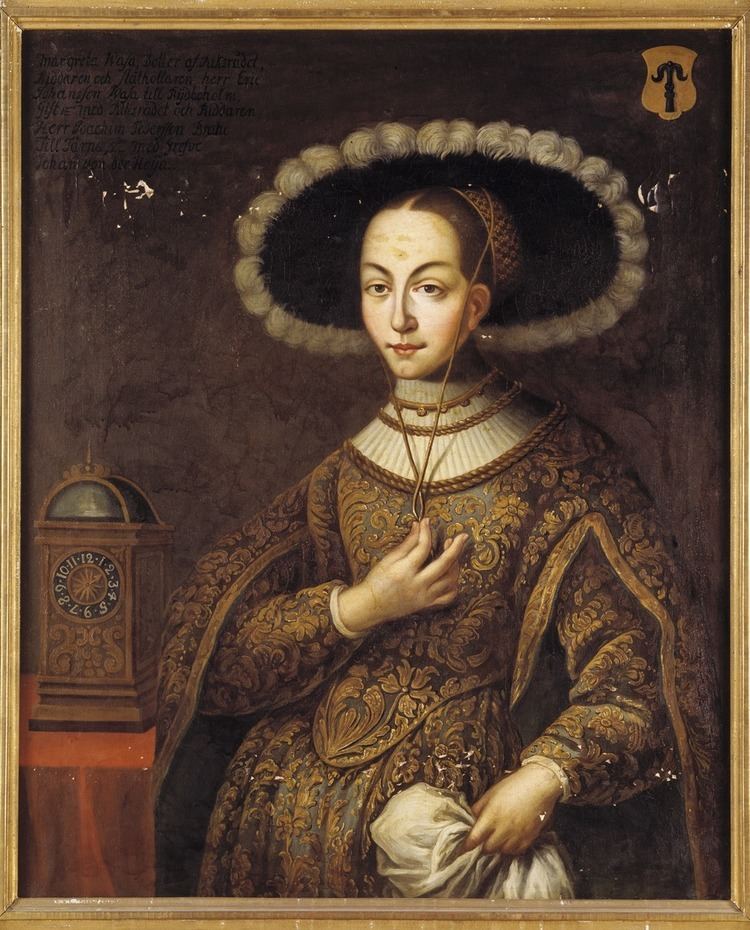 | ||
The Västgötaupproret (Westrogothian rebellion), also known as Västgötabullret (Westrogothian thunder) or Västgötaherrarnas uppror (Rebellion of the Westrogothian Lords) was a Swedish rebellion which took place in the provinces of Småland and Westregothia in Sweden in the spring of 1529. The rebellion was led by members of the nobility, and the purpose was to depose the Swedish monarch king Gustavus Vasa in an attempt to stop the recently initiated Swedish Reformation.
In 1527, king Gustav initiated the Swedish Reformation, which attracted opposition. In April 1529, the king's bailiff in Nydala in Småland was murdered. Shortly thereafter, the sister of the king, Margareta Eriksdotter Vasa, returned to Sweden after a visit to Germany, and was captured in her way by the mayor of Jönköping in Småland, Nils Arvidsson. This unleashed the discontent over the reformation, and the rebels held a meeting in Svenarum 4 April 1529 and in Lekaryd 8 April. They called for the provinces of Ostrogothia and Westergothia to join them in rebellion, and blocked the passage of the king to the provinces. In a meeting in the Larv vicarage 20 April, the representatives of the nobility of the province of Westergothia renounced the king their loyalty and joined the rebellion. Decision was made to ask for other provinces to join them.
The initiators and leaders of the rebellion were nobleman Ture Jönsson (Tre Rosor) and Bishop Magnus Haraldsson of Skara, and among the leading members were the riksråd Måns Bryntesson (Lilliehöök), riksråd Ture Eriksson (Bielke), lagman Nils Olofsson (Vinge), Tord Bonde, governor Nils Clausen of Älvsborg Castle, and Axel Nilsson Posse.
On 6 April, King Gustav successfully advised Ostrogoth not to join the rebellion and asked them to help him liberate his sister. He also successfully prevented other provinces to join. The 16 April, he contacted the rebellions peasants of Småland, pardoned them for having slaughtered his bailiff and thanked them for providing and protecting his sister. On a meeting between the rebels on 25 April, the peasantry of Westergothia encouraged the rebellious lords to write a statements of demands to the king in exchange for peace. In the kings reply on 6 May, he stated that he was willing to negotiate, but he also uttered a threat that all rebels belonging to the nobility would be punished. This caused a rift between the lords and the peasantry, and the two leaders Ture Jönsson (Tre Rosor) and Bishop Magnus Haraldsson of Skara fled to Denmark: the king unsuccessfully asked the king of Denmark to expel them to him. The son of lord Ture Jönsson, Jöran Turesson (Tre Rosor) and his private rebel army was captured in Hälsingland. The rebellion was thereby subdued.
In June 1529, Måns Bryntesson (Lilliehöök), and Nils Olofsson (Vinge) was sentenced to death and executed; riksråd Ture Eriksson (Bielke) was pardoned because his mother asked for mercy on his part. All remaining rebels were pardoned and their sentences reduced to fines.
